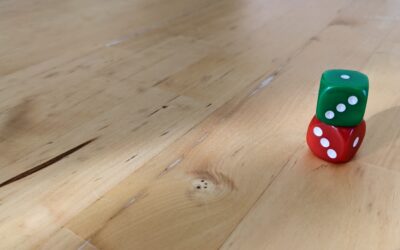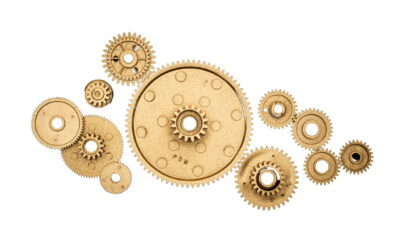In an unusual result, the High Court of Australia has returned an equally divided decision in Aristocrat Technologies Australia Pty Ltd v Commissioner of Patents [2022] HCA 29 regarding whether Aristocrat’s innovation patent covering an electronic gaming machine is directed toward patentable subject matter. Where the High Court is equally divided, the Full Federal Court’s decision is affirmed. Whilst this is bad news for Aristocrat, the second decision of the High Court is expected to provide useful arguments for Applicants seeking patent protection in this field of technology.
Background
Aristocrat owned four innovation patents directed toward an electronic gaming machine (EGM), also known as a “slot machine”. An EGM comprises various hardware components, such as a game controller and a video display, as well as software to present an interactive game.
A delegate of the Commission found that each innovation patent lacked a manner of manufacture (i.e., is directed to unpatentable subject matter) according to s 18 of the Patents Act 1990 (Cth). Aristocrat’s appeal against the delegate’s decision to the Federal Court of Australia was allowed. However, the Commissioner appealed successfully to the Full Court of the Federal Court of Australia, discussed in more detail in our earlier article. Aristocrat appealed to the High Court pursuant to a grant of special leave.
Both Aristocrat and the Commissioner agreed that the specification and claim 1 of Australian Innovation Patent Number 2016101967 were sufficiently similar for analysis to decide the outcome for the remaining innovation patents.
Submissions
Aristocrat submitted that recent Federal Court decisions had fallen into error, developing contrived constraints for the patentability of computer implemented inventions. Specifically, Aristocrat submitted that Research Affiliates and subsequent decisions ‘erroneously conflated the issue as to manner of manufacture with issues as to novelty and inventive step, thereby narrowing unjustifiably the conception of manner of manufacture’. For example, Aristocrat highlighted the hypothetical example provided in the CCOM where the Full Federal Court suggested that a ball point pen was patentable subject matter despite lacking novelty and inventive step.
The Commissioner submitted that the characterisation of Aristocrat’s invention was a set of rules for playing a game, implemented using conventional computer technology. Furthermore, the Commissioner submitted that the apparatus was conventional, namely a gaming machine having well-known and well-understood functions, and that the substance of the claim, and what differentiated it from other conventional gaming machines, was merely an abstract idea and unpatentable.
First Decision
In addressing the Aristocrat’s submission of the conflation of grounds of validity, Kiefel CJ, Gageler and Keane JJ turned to the rather infamous High Court decision of N V Philips Gloeilampenfabrieken v Mirabella International Pty Ltd (herein N V Philips) which provides for a threshold requirement of inventiveness that an alleged invention must possess on the face of the specification. Specifically, with respect to the example raised in CCOM, their Honours noted at [72] that:
N V Philips provides an answer to Aristocrat’s reliance on observations in CCOM about the structure of s 18 of the Act which were encapsulated in the example that “whilst a claim for the ball point pen now would fail for anticipation [want of novelty] and obviousness [want of an inventive step], it would still be a claim for a manner of manufacture”. The ball point pen would not, now or at the time CCOM was decided, have met the threshold requirement of s 18 that it be an invention because it is not, and was not then, new.
Their Honours characterised the claimed invention as a new system or method of gaming and that it was only in relation to the feature game that the invention subsisted. In particular, at [73] their Honours stated:
In the absence of a claim to some variation of or adjustment to generic computer technology to give effect to, or accommodate the needs of, the new game, there is no reason to characterise the claimed invention as other than a claim for a new system or method of gaming: it is only in relation to the feature game that the invention is claimed to subsist.
Their Honours also found that Aristocrat’s invention ‘cannot be said to fall within a category of case in which, as an element of the invention, there [is] a component that [is] physically affected or a change in state or information in a part of a machine’. Ultimately, their Honours concluded that there was ‘nothing in claim 1 that might lead to the conclusion that it has produced some adaptation or alteration of, or addition to, technology otherwise well-known in the common general knowledge’, thereby ultimately confirming that the Full Court’s decision was correct.
However, their Honours were critical of the two-step analysis proposed by the Full Federal Court, stating at [77]:
the two-step analysis proposed by their Honours unnecessarily complicates the analysis of the crucial issue. As explained in Myriad, the crucial issue is as to the characterisation of the invention by reference to the terms of the specification having regard to the claim and in light of the common general knowledge. It is not apparent in the present case that asking whether the claimed invention is an advance in computer technology as opposed to gaming technology, or indeed is any advance in technology at all, is either necessary or helpful in addressing that issue. As Nicholas J explained, the issue is not one of an “advance” in the sense of inventiveness or novelty. In conformity with the decision in N V Philips, the issue is whether the implementation of what is otherwise an unpatentable idea or plan or game involves some adaptation or alteration of, or addition to, technology otherwise well-known in the common general knowledge to accommodate the exigencies of the new idea or plan or game.
In some consolation, their Honours responded to concerns raised by the Institute of Patent and Trade Mark Attorneys (IPTA) in relation to the Full Federal Court’s two-step test which could have seismic effects beyond the gaming industry for inventions implemented using generic computer implementation. Their Honours stated that ‘a claimed invention for patentable subject matter does not become unpatentable because it is operated by generic computer technology’.
Second Decision
Gordon, Edelman and Steward JJ highlighted that significant caution is needed when characterising the invention. In particular, their Honours observed at [103]:
The characterisation exercise should not be artificial. An artificially specific characterisation could confine any claim to a mere intellectual idea, which, as is explained below, could deny an obvious manner of manufacture by ignoring the means of implementing the idea. Similarly, an artificially generalised characterisation could remove the element of novelty or inventiveness from any claim.
Their Honours acknowledged that whilst there is a threshold requirement of inventiveness per N V Philips, the threshold is low. Their Honours stated at [111]:
Whatever controversy may remain as to the threshold requirement for an alleged invention, the decision[s] … demonstrate that the threshold is low. Further, the threshold necessarily imposes a less stringent requirement than the independent requirements of novelty and inventiveness in ss 18(1)(b)(i) and 18(1)(b)(ii) read with s 7. Like those provisions, the threshold should not be assessed in hindsight: “[t]he opening of a safe is easy when the combination has been already provided”. And, when assessing this threshold question without the benefit of expert evidence as to prior art, it is important to “remember warnings” that “[the] Court should be careful to avoid assuming a technical expertise it does not have”.
Furthermore, their Honours highlighted that at no stage during litigation did the Commissioner argue that the invention failed to possess the necessary quality of inventiveness on the face of the specification.
Their Honours were critical of the artificial distinction drawn by the Commissioner between an electronic game and a physical board game in terms of patentability. In particular, their Honours stated at [119]:
In the 21st century, it would be absurd if the application of this principle were any different where the idea of the game is combined with a digital representation rather than a cardboard representation of the game. For instance, as senior counsel for the Commissioner properly accepted on this appeal, the game of Monopoly is patentable subject matter where it is embodied in a physical form such as a designed cardboard board, dice, and playing characters. It could not possibly be the case that the game of Monopoly ceases to be patentable subject matter if the graphics are displayed on a machine rather than on cardboard. To treat the two differently on the basis that the digital representation does not involve a physical transformation of something would plainly be to allow form to triumph over substance.
Their Honours also observed that ‘a manner of manufacture thus requires only the existence of some material and artificial advantage’. Whilst their Honours acknowledged that a mere scheme or plan cannot be the subject matter of a patent, they noted it was ‘equally well established that one way in which a “mere method” will become a manner of manufacture is when it is practised or used in a way that is embodied in a physical form.’
Their Honours were also critical of the Full Federal Court’s test which required ‘an improvement in computer technology’, proposing at [122]:
a better question would be to ask whether the claimed subject matter is (i) an abstract idea which is manipulated on a computer; or (ii) an abstract idea which is implemented on a computer to produce an artificial state of affairs and a useful result.
Their Honours further observed that the ‘the artificial state of affairs and useful result may be a physical change in something, but it need not be. The artificial state of affairs may be an improvement in computer technology, but it need not be. It is enough that the artificial state of affairs and useful result are created by “the way in which the method is carried out in the computer’.
Critically in contrast to the first opinion of the High Court, their Honours observed at [123] that:
the method of carrying out the idea in the computer, and the artificial state of affairs and useful result, need not be inventive or ingenious. The ingenuity may lie only in the idea but, when the idea is applied to produce an artificial state of affairs and a useful result, there will be a manner of manufacture.
In light of these observations, their Honours proposed an alternate characterisation of Aristocrat’s invention, that being ‘an EGM incorporating an interdependent player interface and a game controller which includes feature games and configurable symbols’. Their Honours concluded that this characterisation was not merely ‘the idea of a game, incorporated into a game controller, without any novelty or inventiveness’, but rather the ‘operation of the game controller, displayed through the player interface’ which was ‘an altered EGM involving an artificial state of affairs and a useful result amounting to a manner of manufacture’.
Outcome
As the High Court was equally divided, s 23(2)(a) of the Judiciary Act 1903 (Cth) stipulates that the decision appealed from shall be affirmed. Accordingly, the High Court ordered that the appeal be dismissed with costs. Some may question why an even number of judges heard this case which could result in an equally divided outcome. In this instance, Gleeson J was unavailable for the hearing of this matter.
Discussion
Unfortunately, few common principles can be drawn from such opposing decisions. Pleasingly, the High Court unanimously held that the only question in assessing whether a manner of manufacture exists is whether there is a manner of manufacture within s 6 of the Statute of Monopolies. As such, at least the Full Federal Court’s two-step test requiring an advance in computer technology no longer appears to be applicable.
On a practical level, prior to this decision, the highest Australian authority to have considered the patentability of computer implemented inventions in recent time (i.e., 2010 to present) was the Full Federal Court. In all instances, the inventions in question were found to not be patentable subject matter resulting in rather negative case law for applicants in this field of technology. This may be where the silver lining lies – with the second decision of the High Court, there would appear to be a leveling of the playing field providing useful argumentative ammunition for applicants responding to patentable subject matter objections before the Patent Office.
Finally, it is worth noting that Kiefel CJ and Keane J are due to retire from the High Court within the next two years. Should the High Court entertain consideration of this subject again, and this subject clearly appears to be a point of law requiring further consideration, a less divided opinion in favour of patent applicants of computer implemented inventions could be reached soon.









